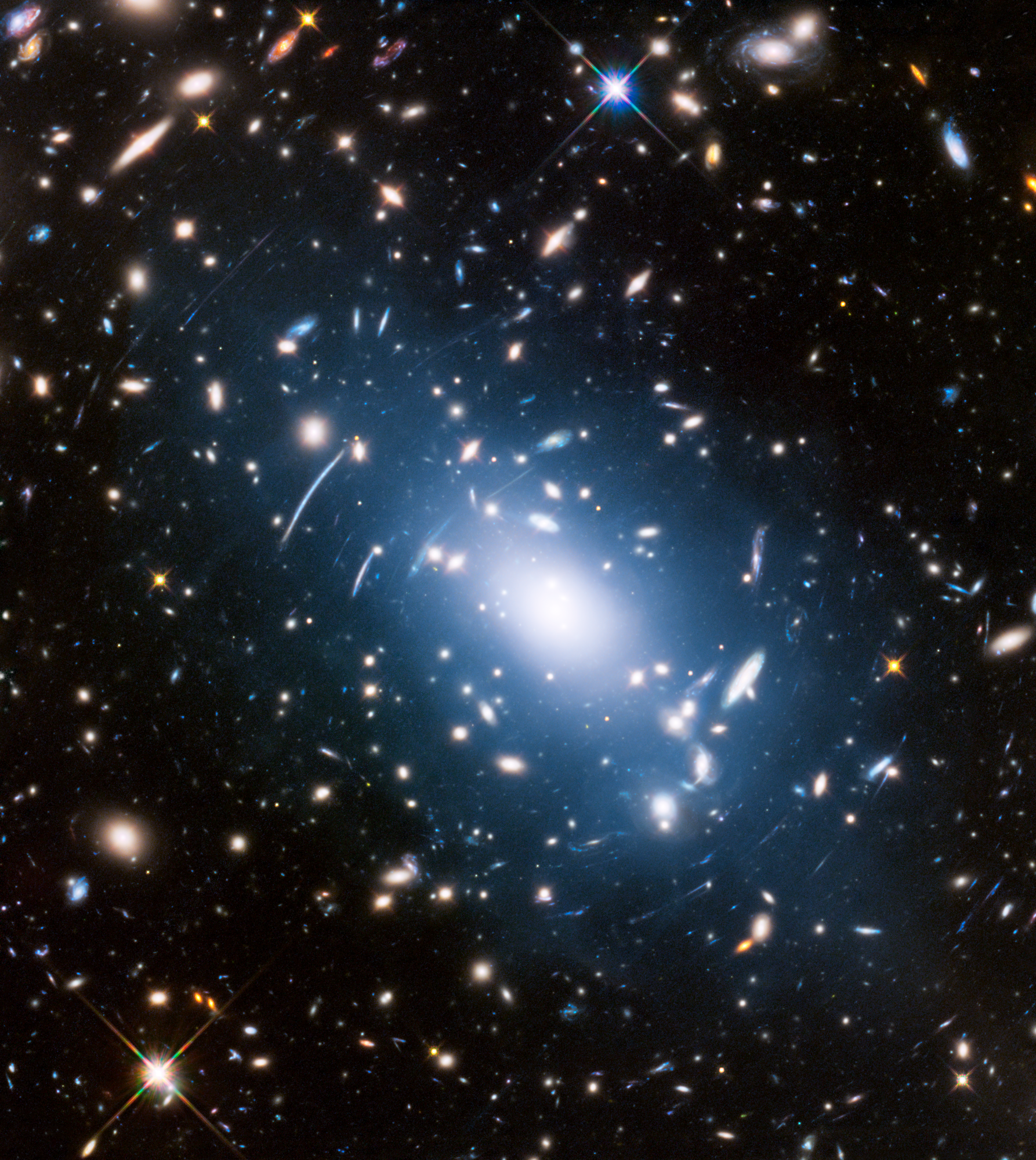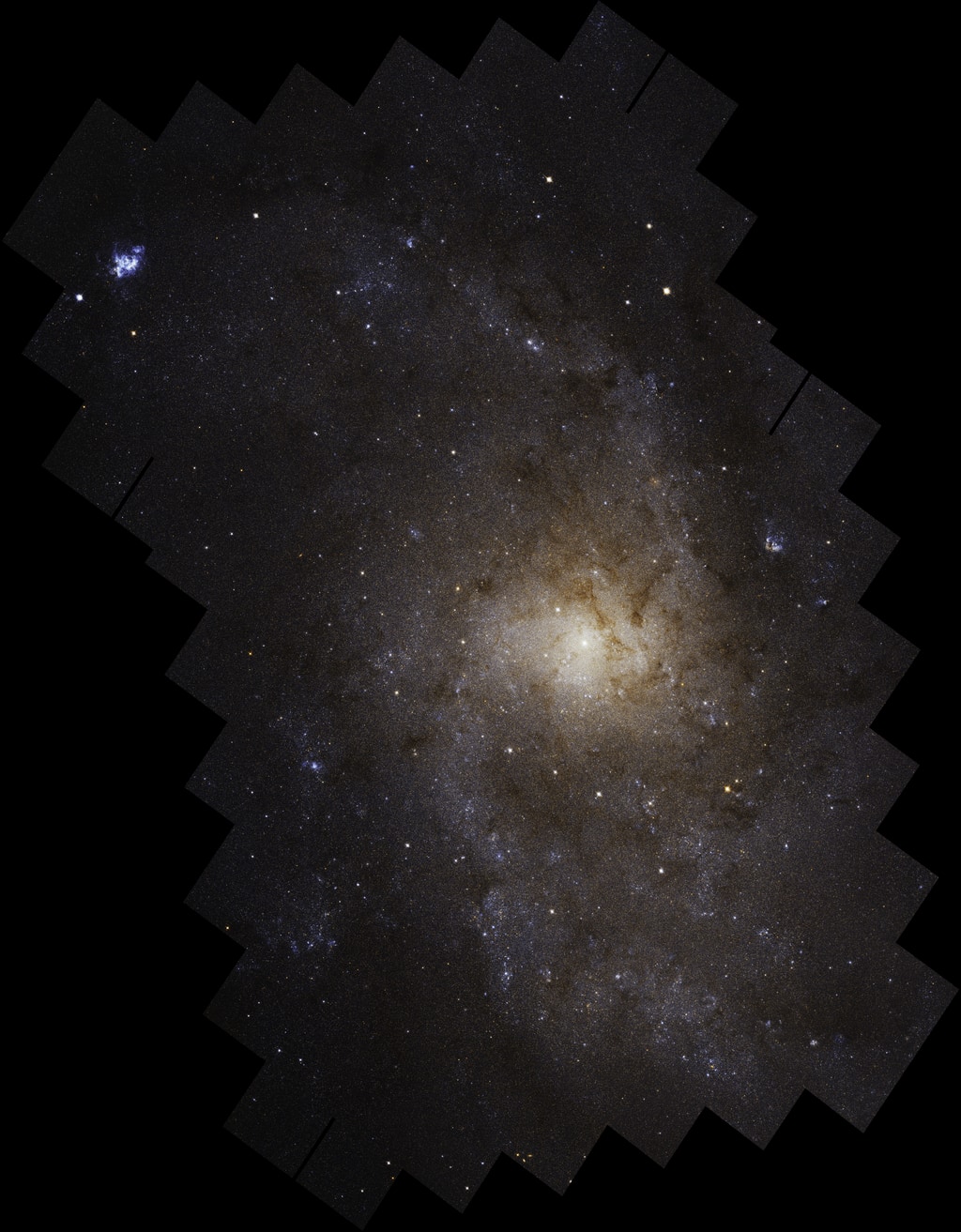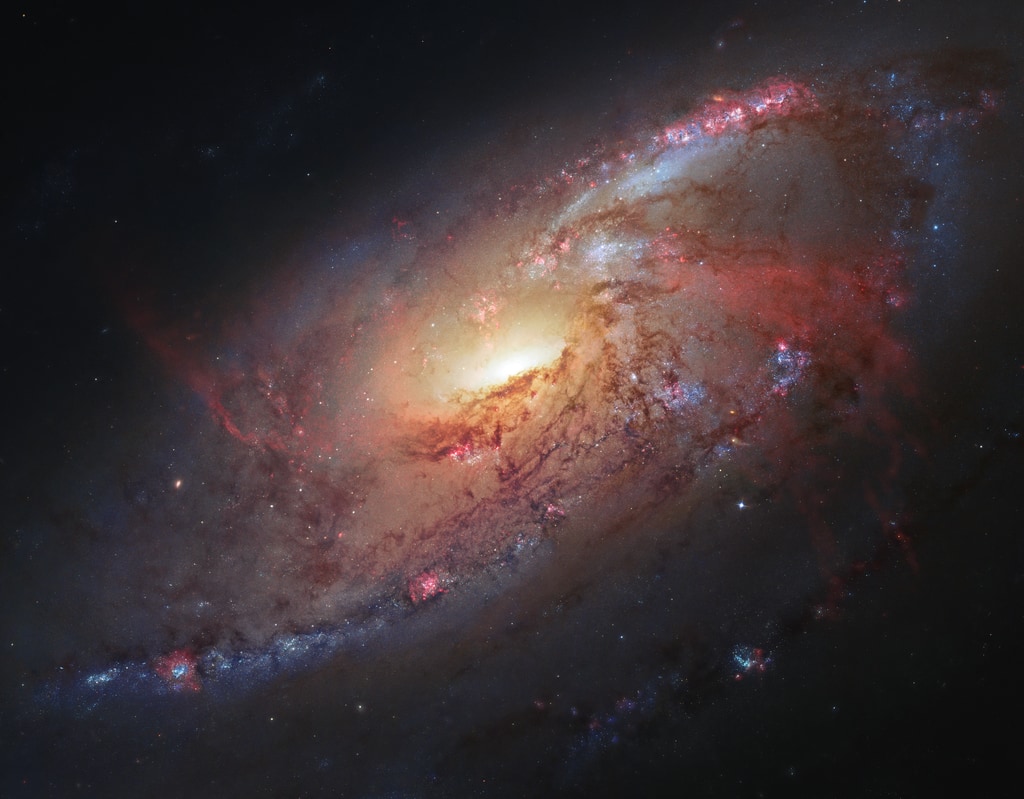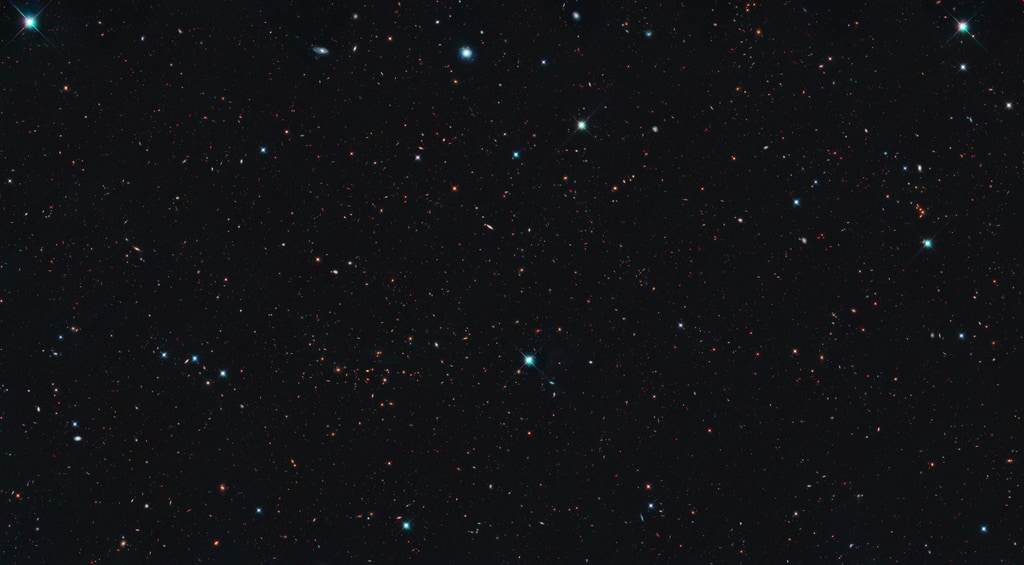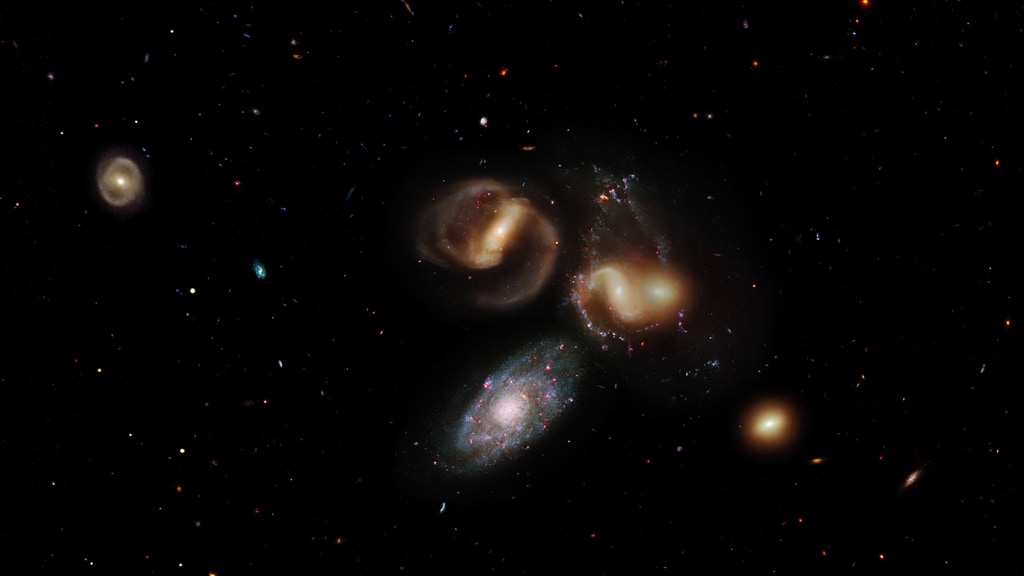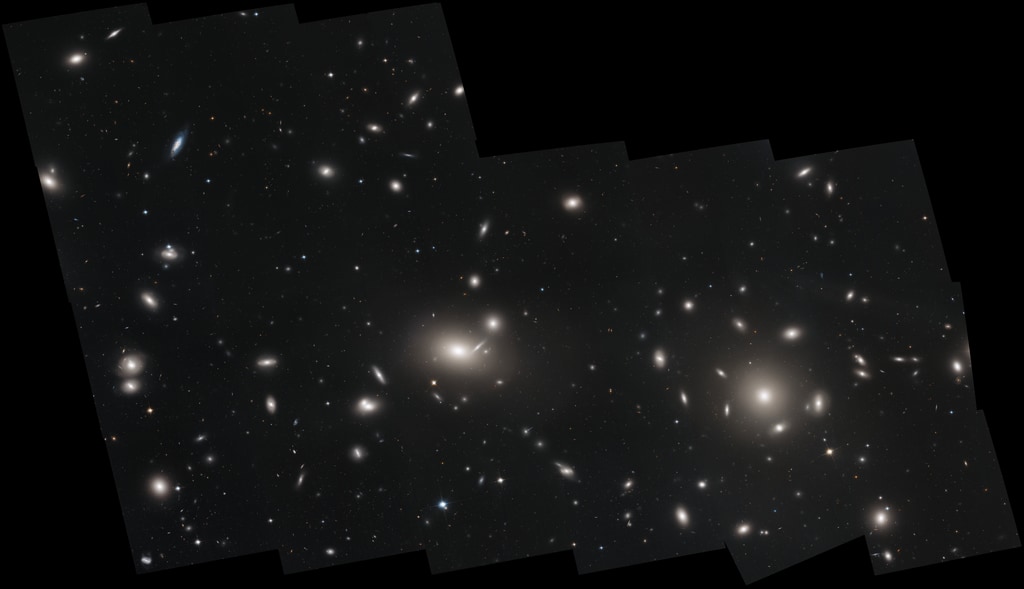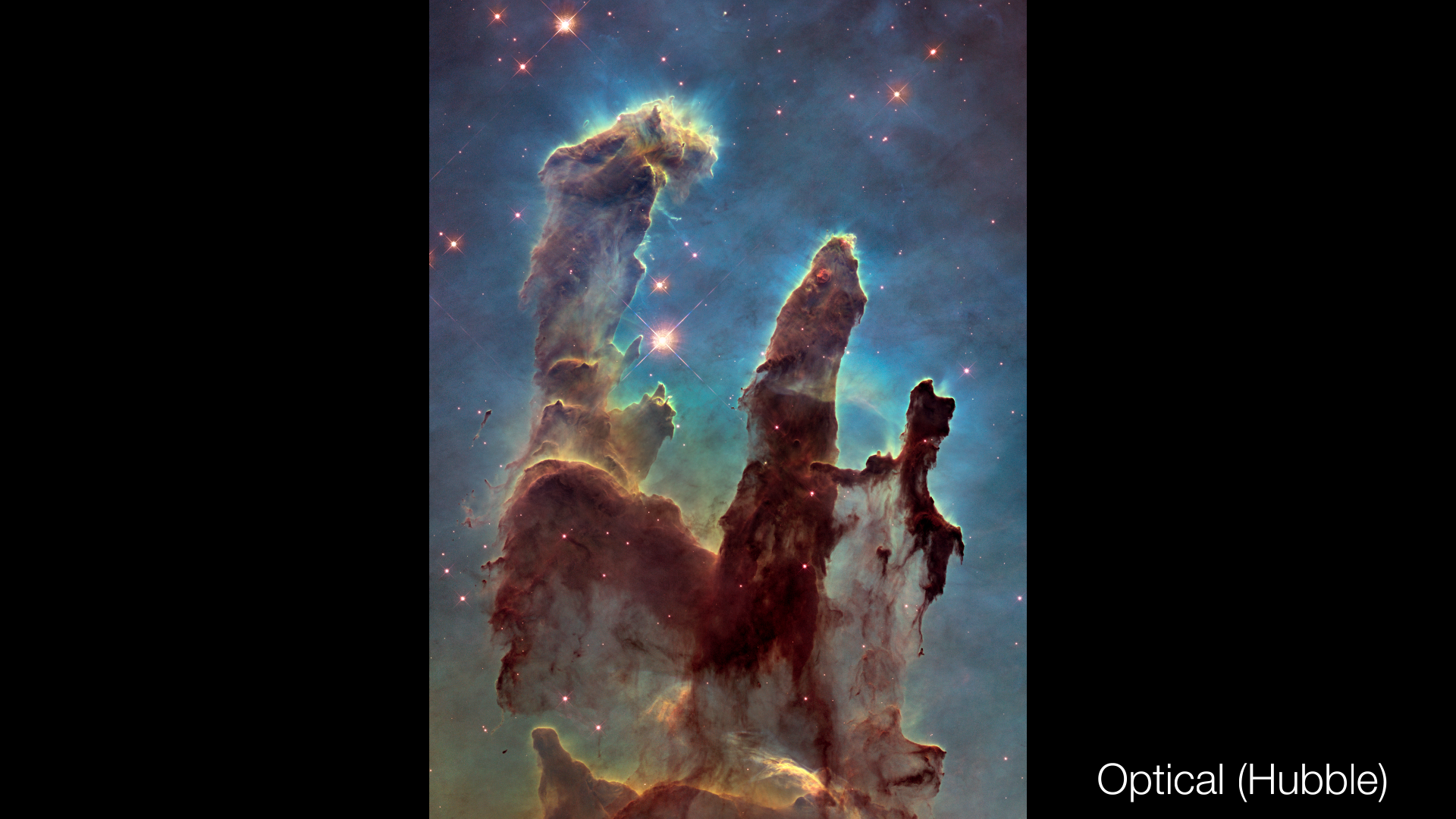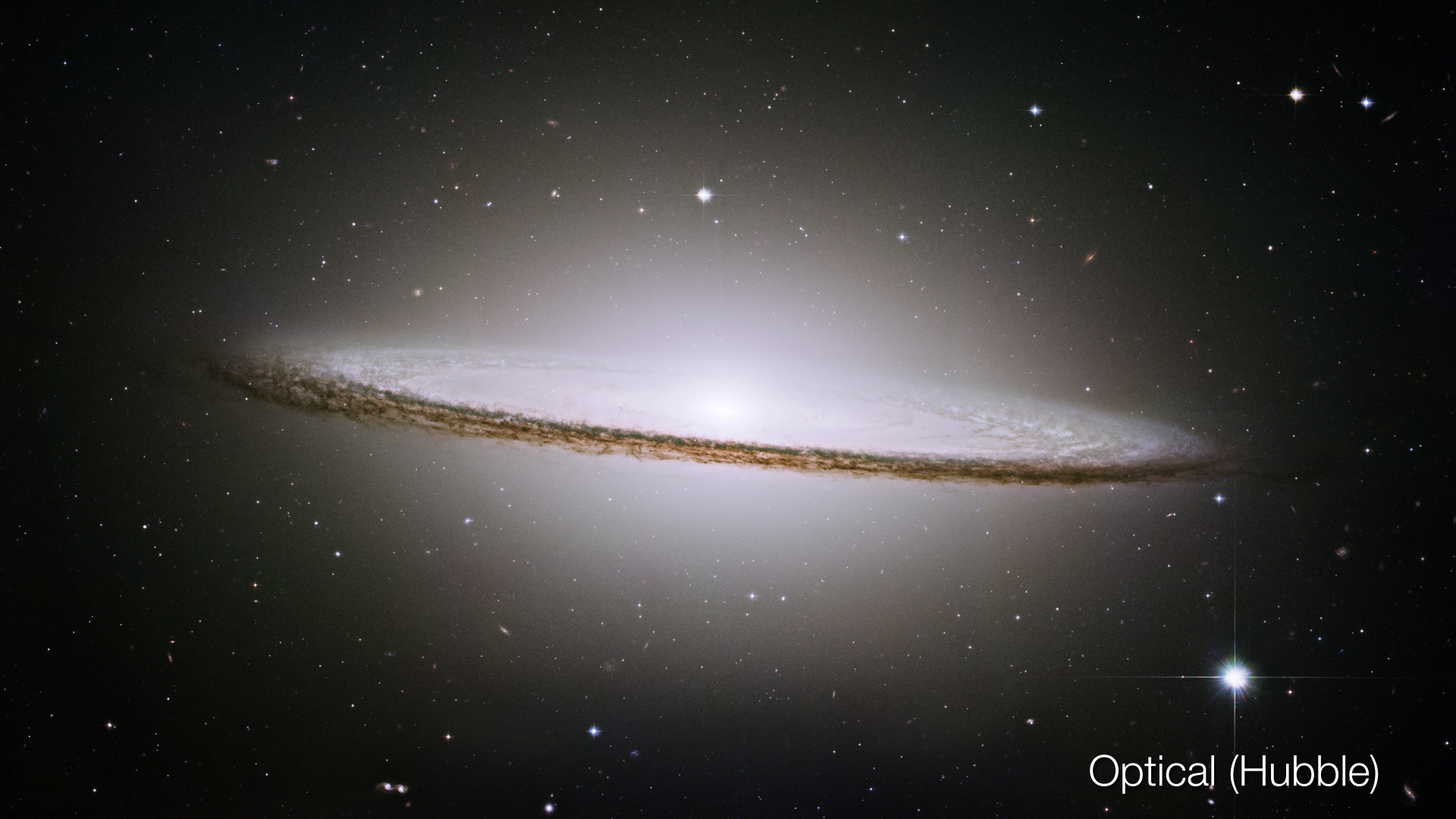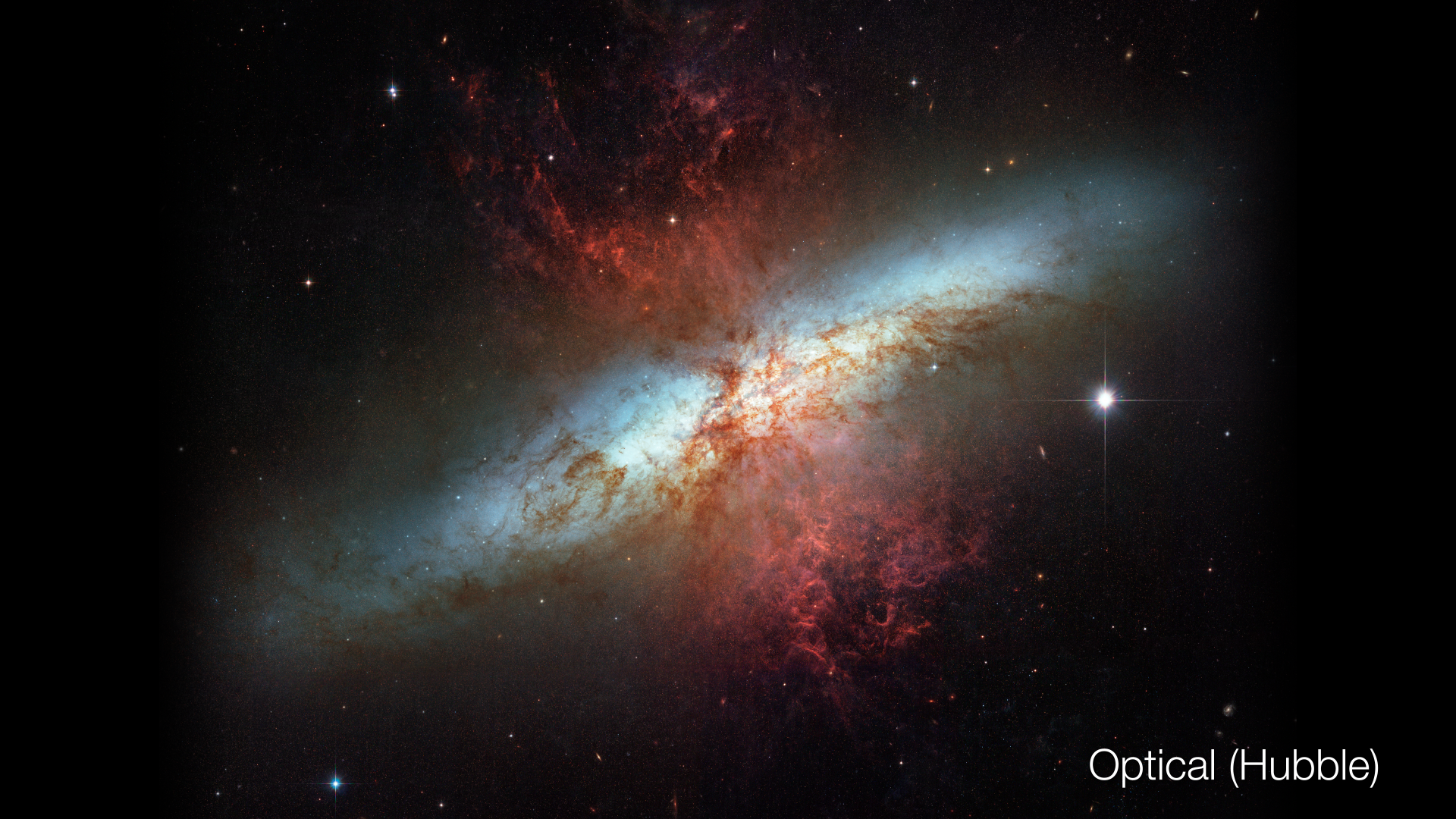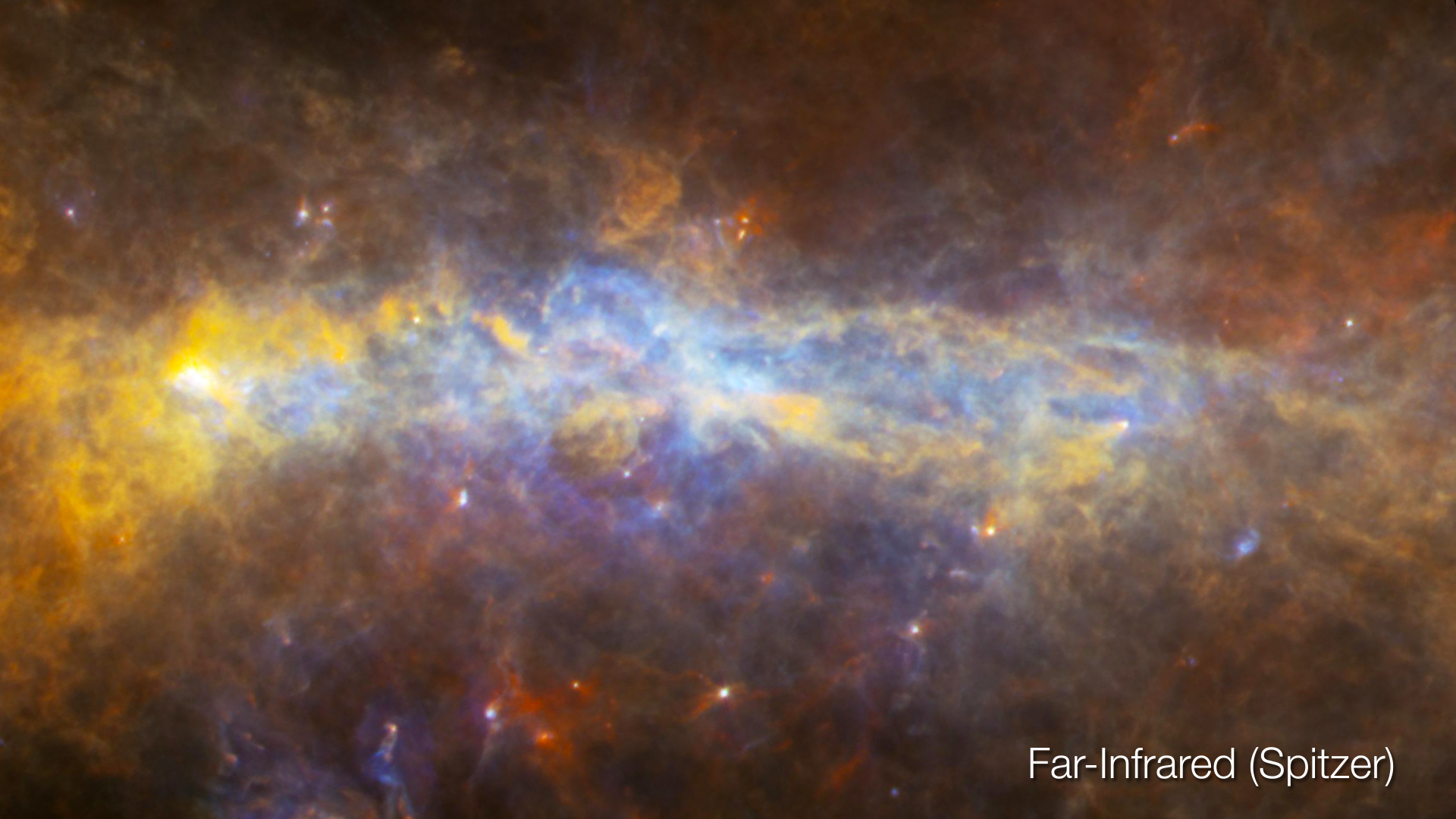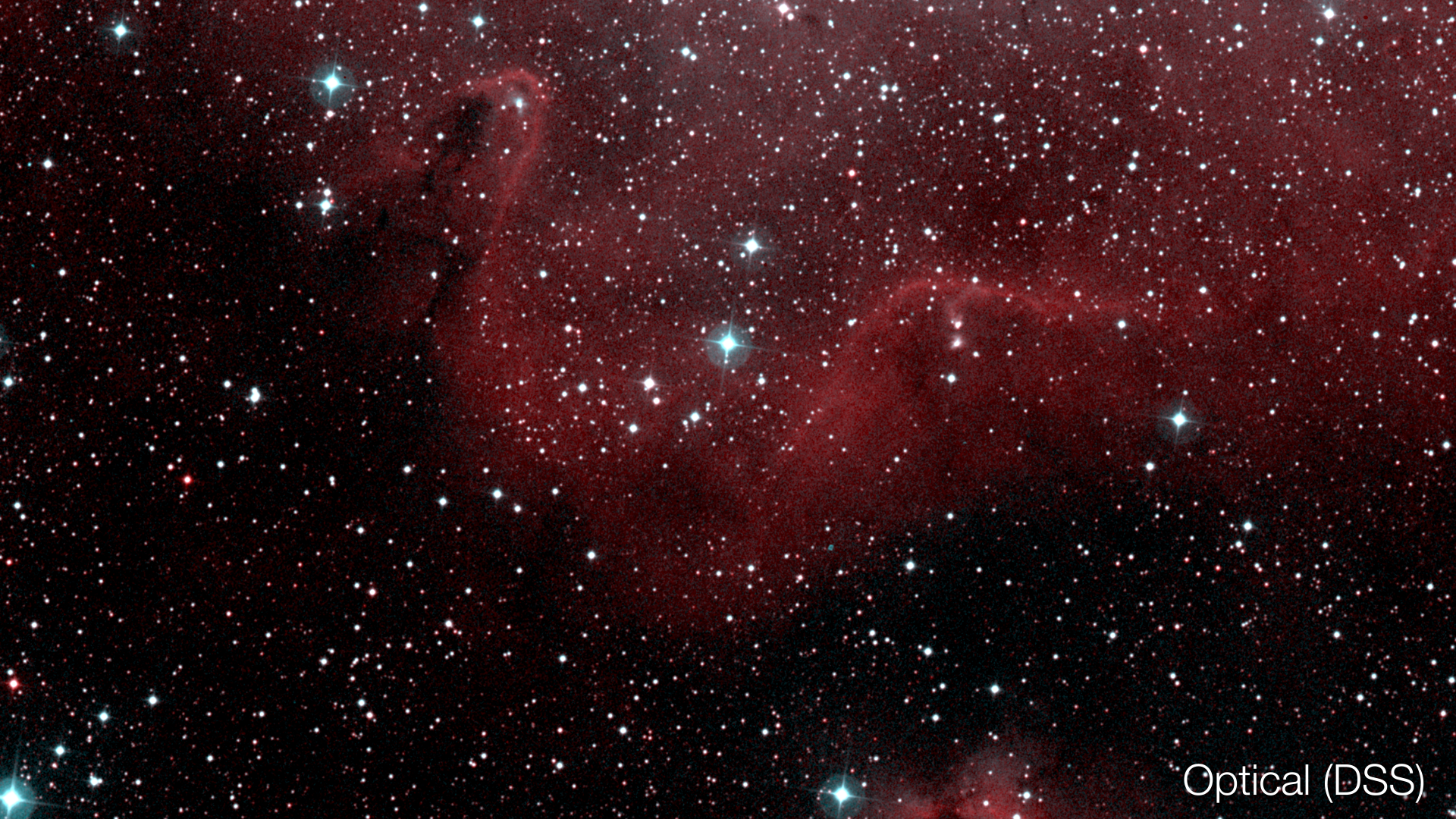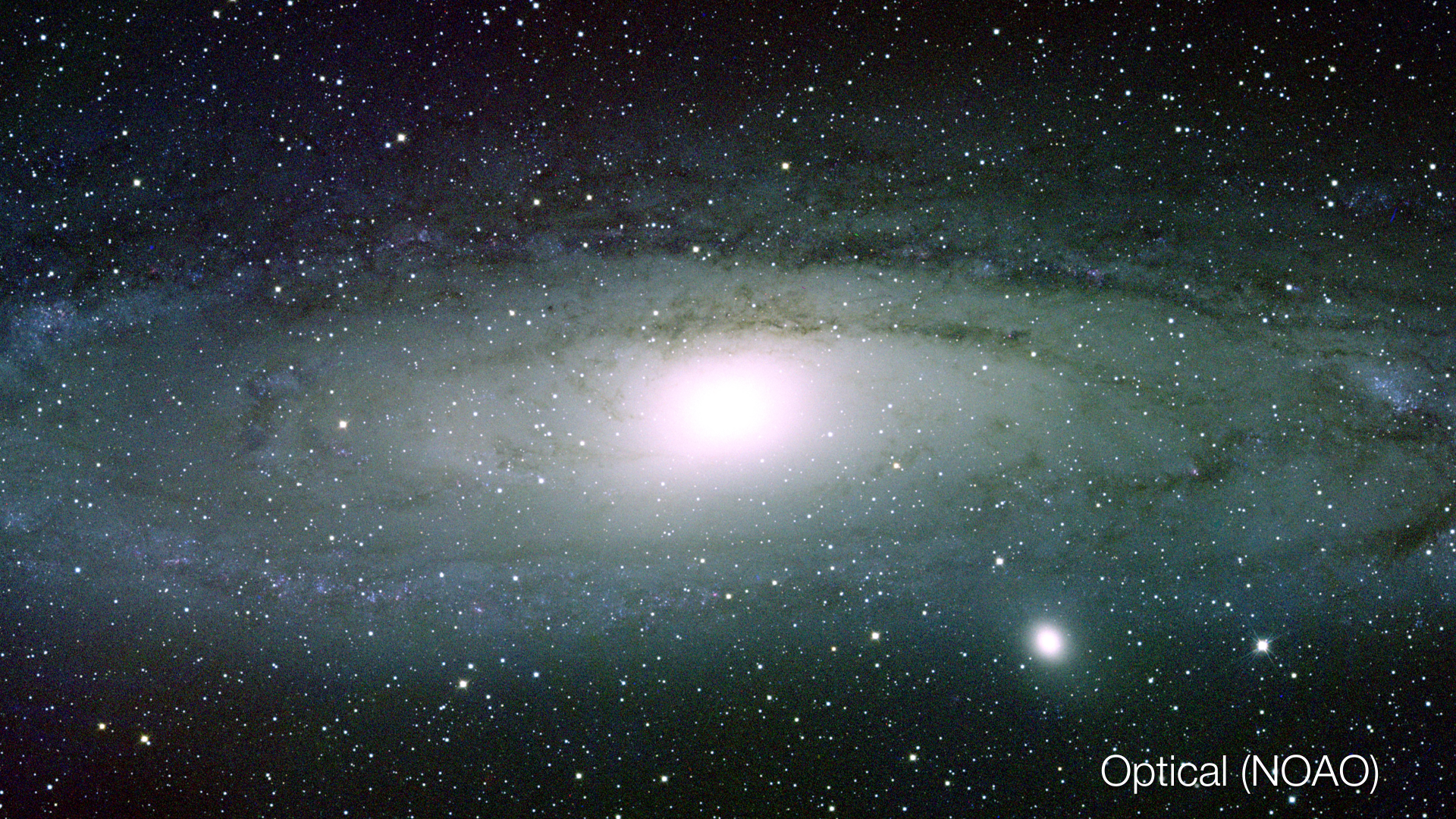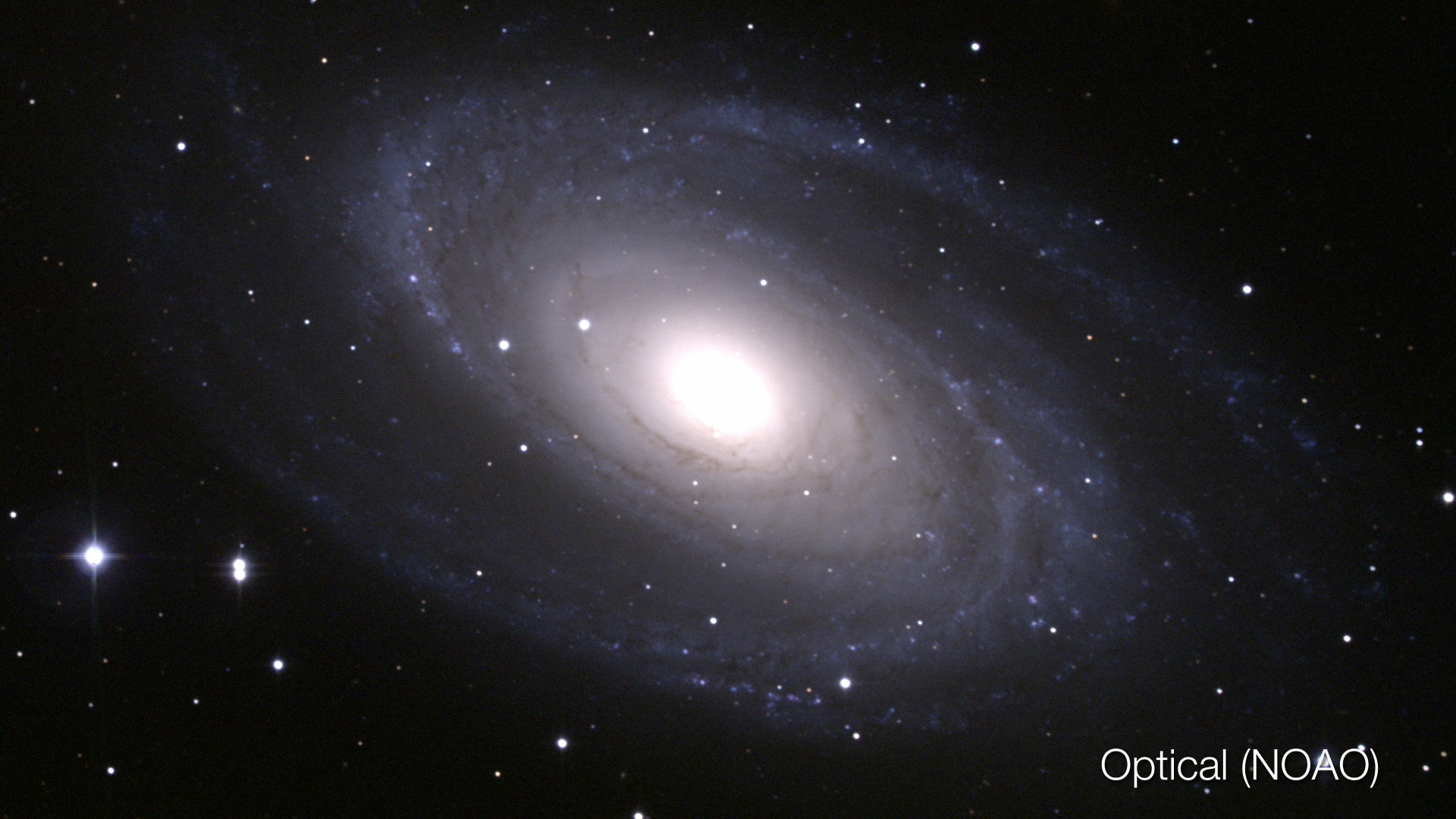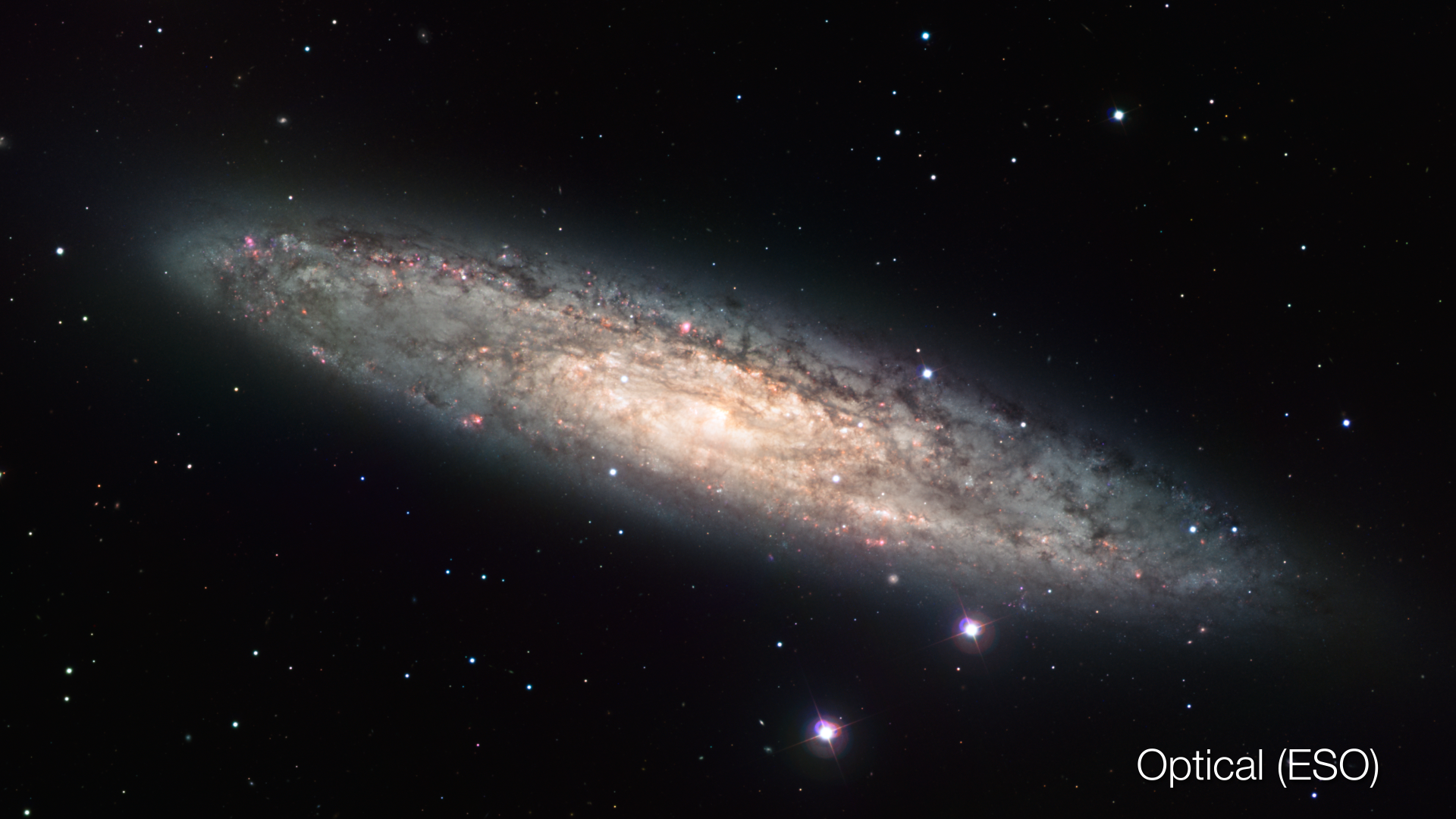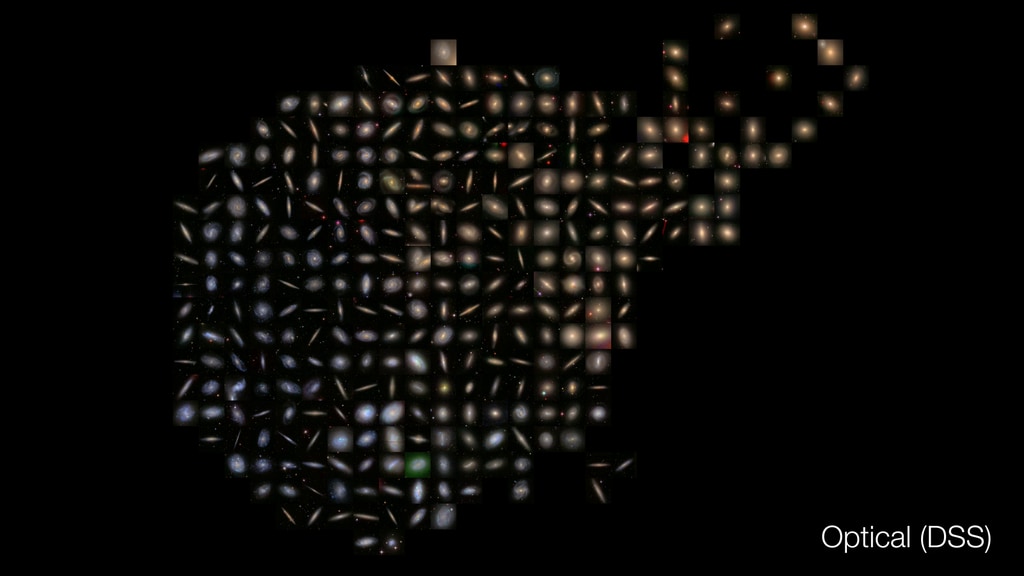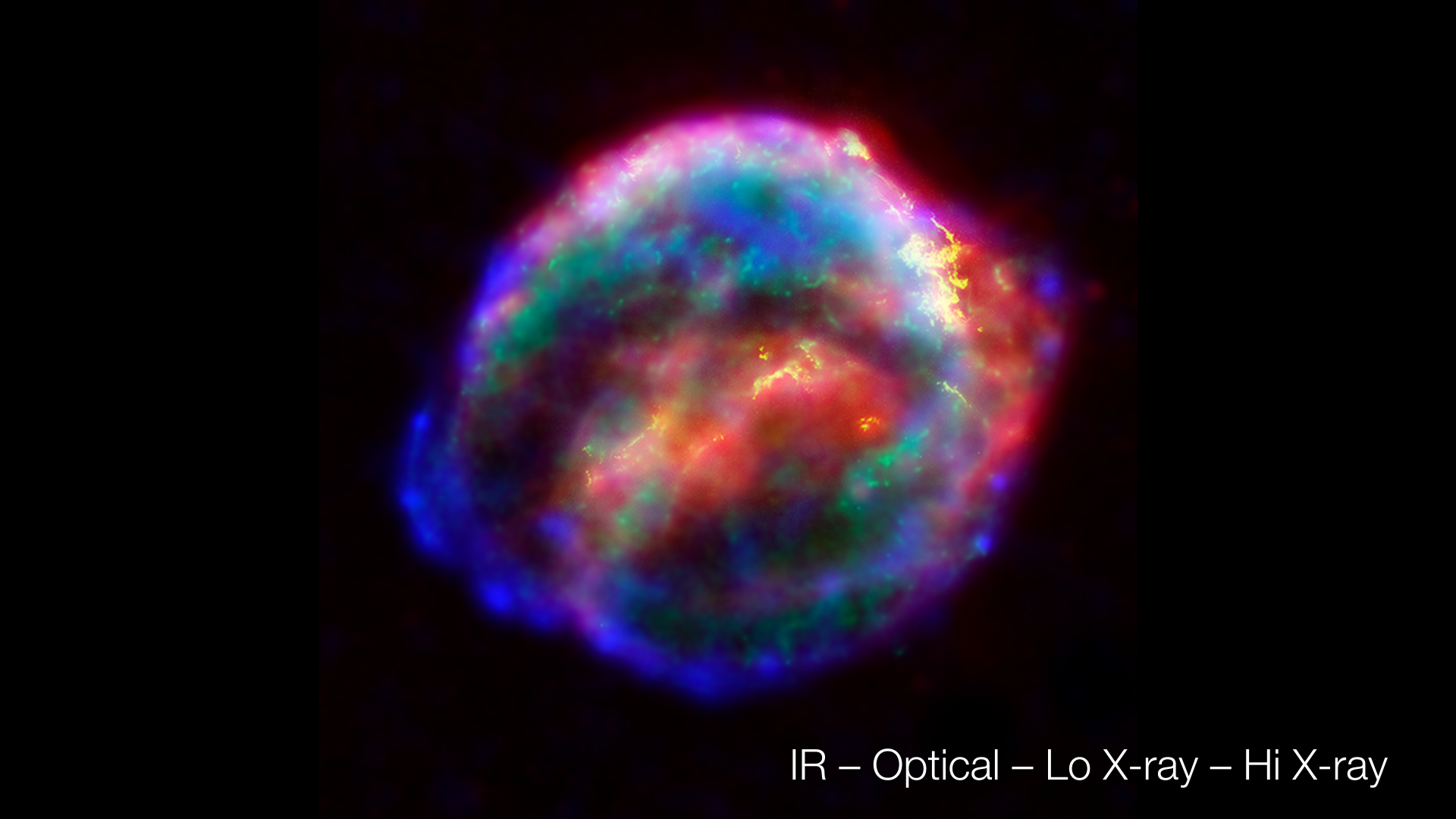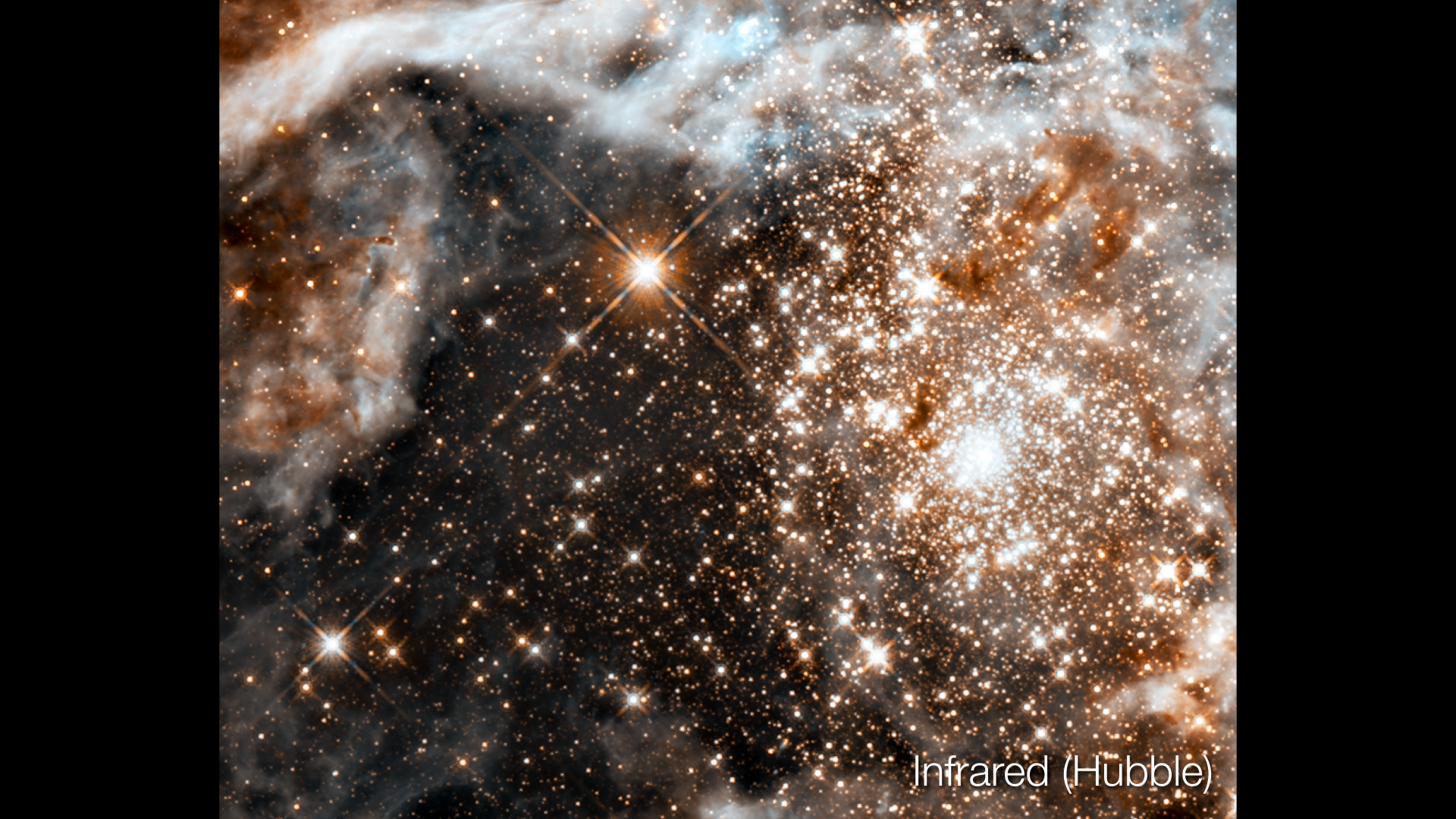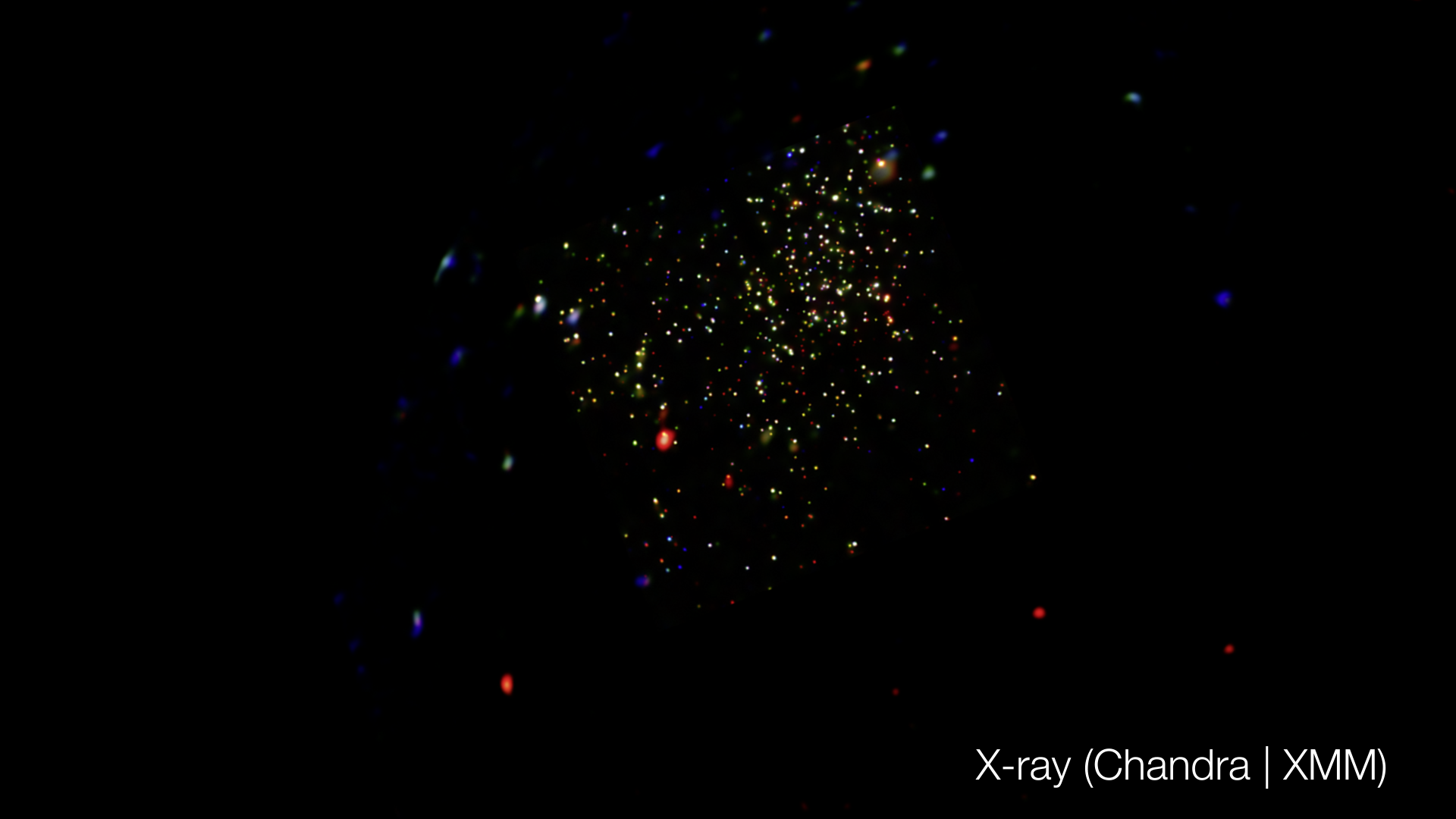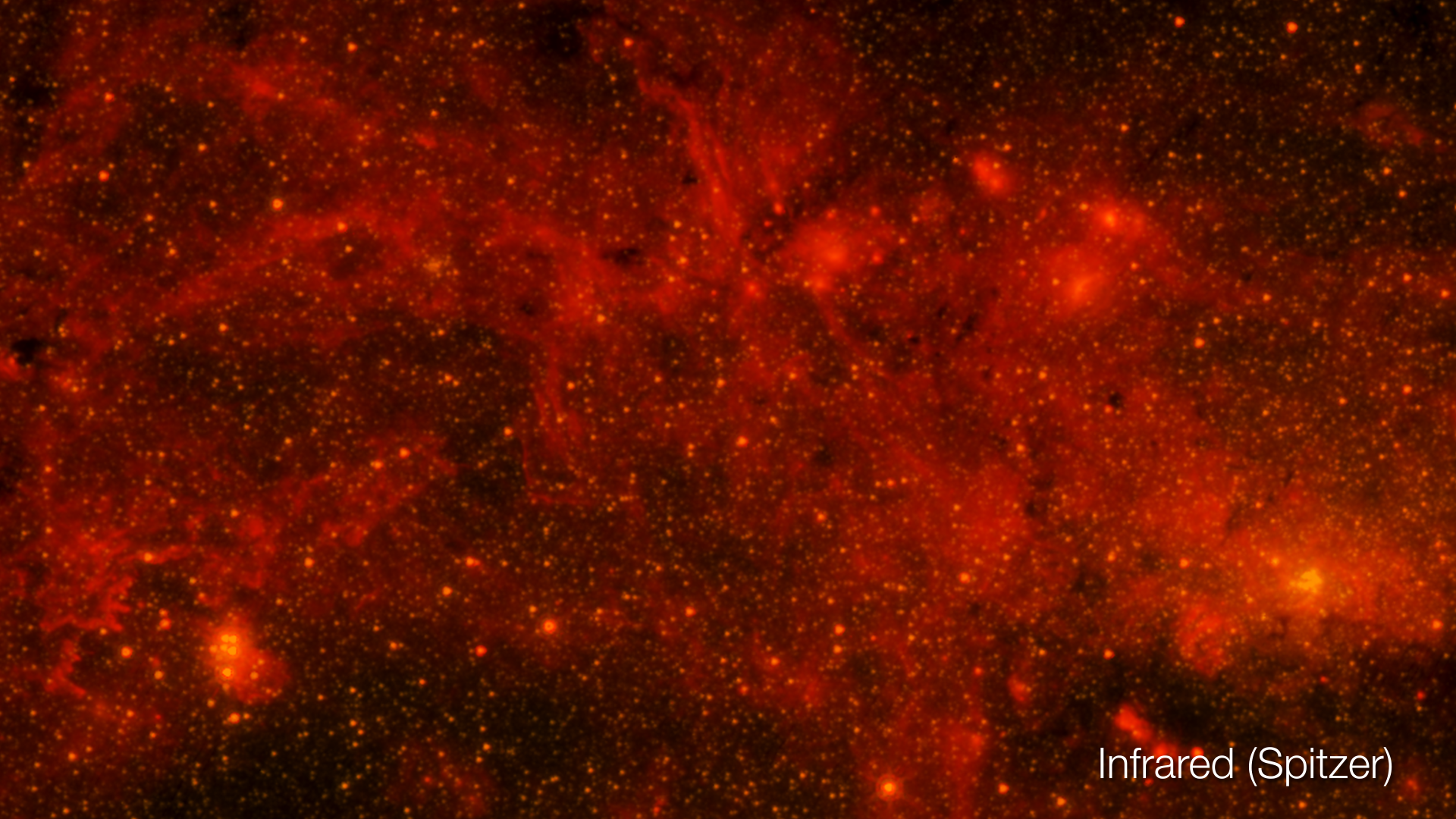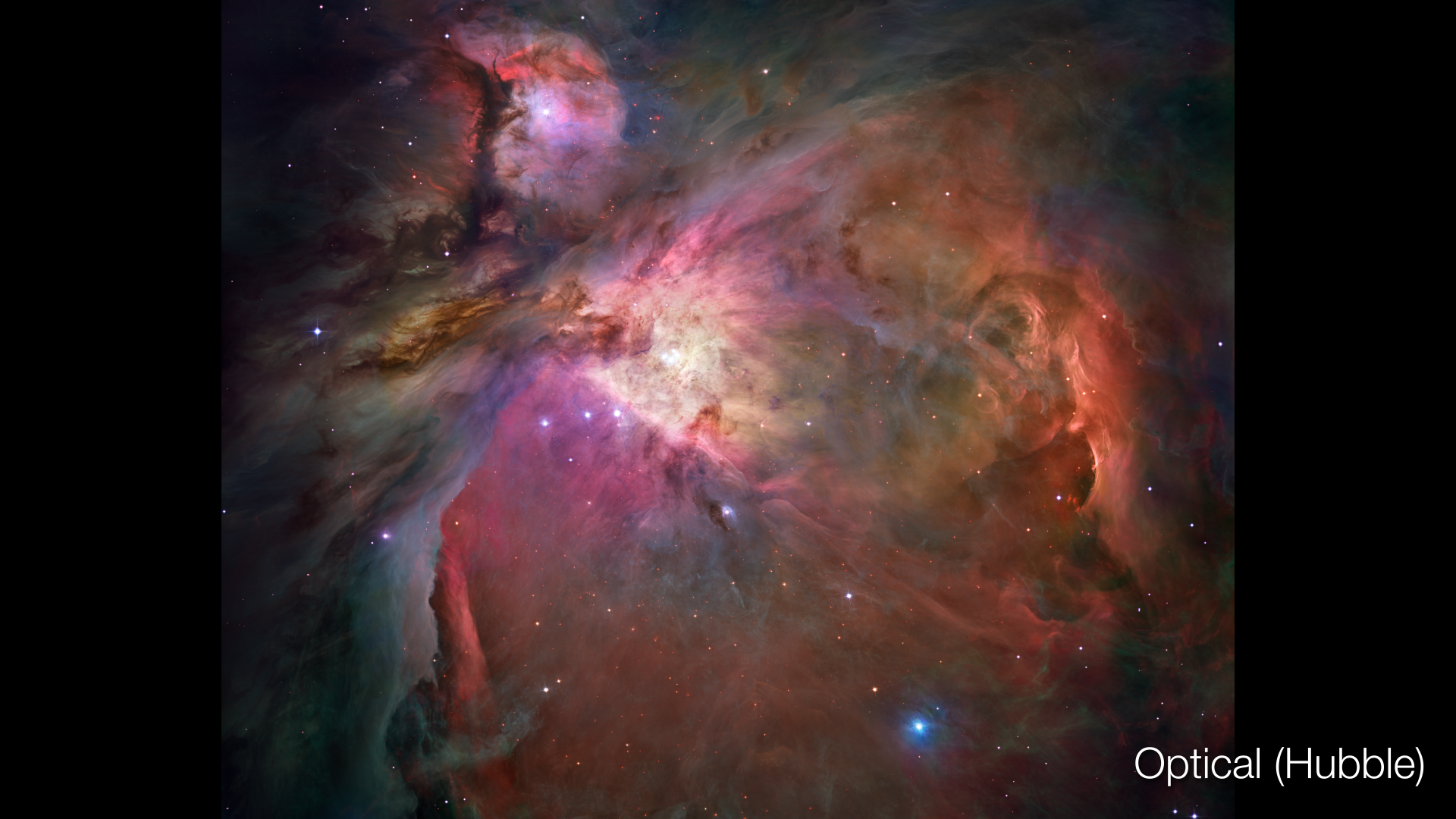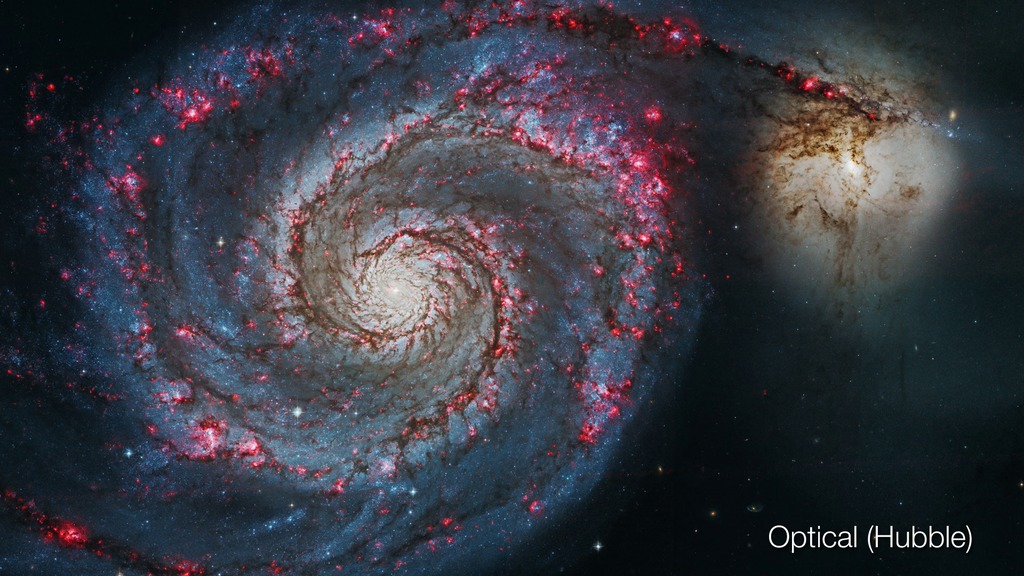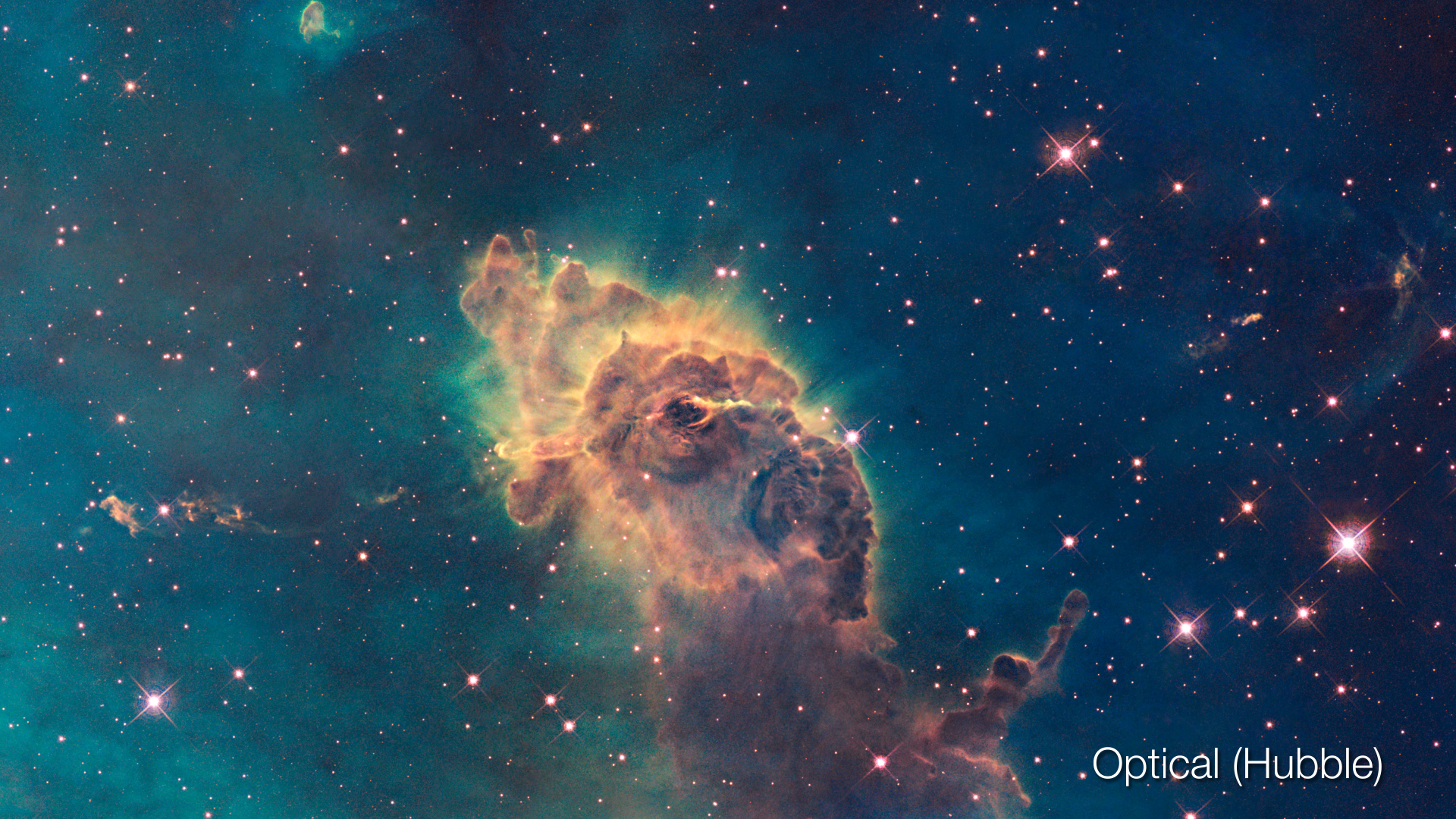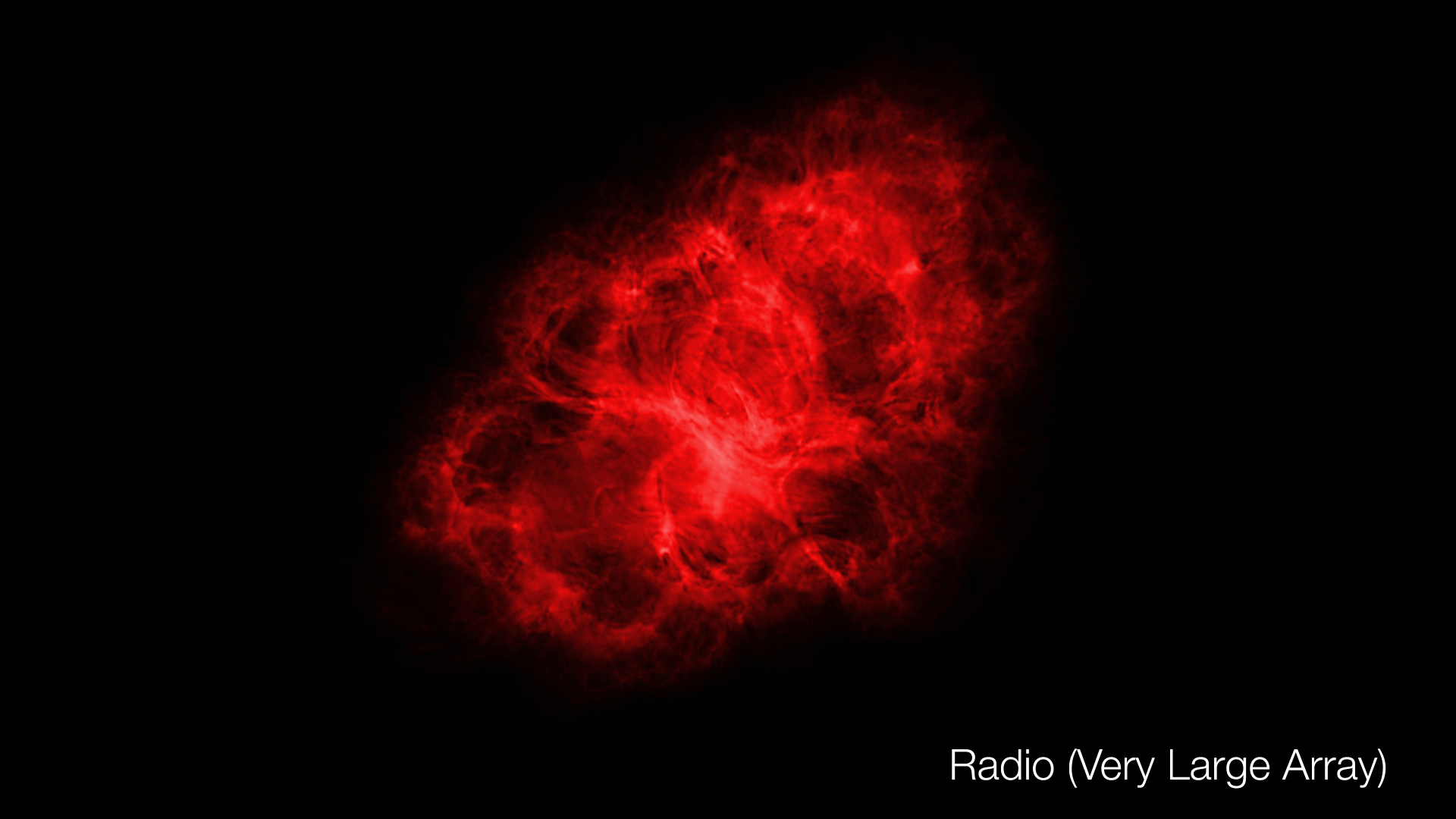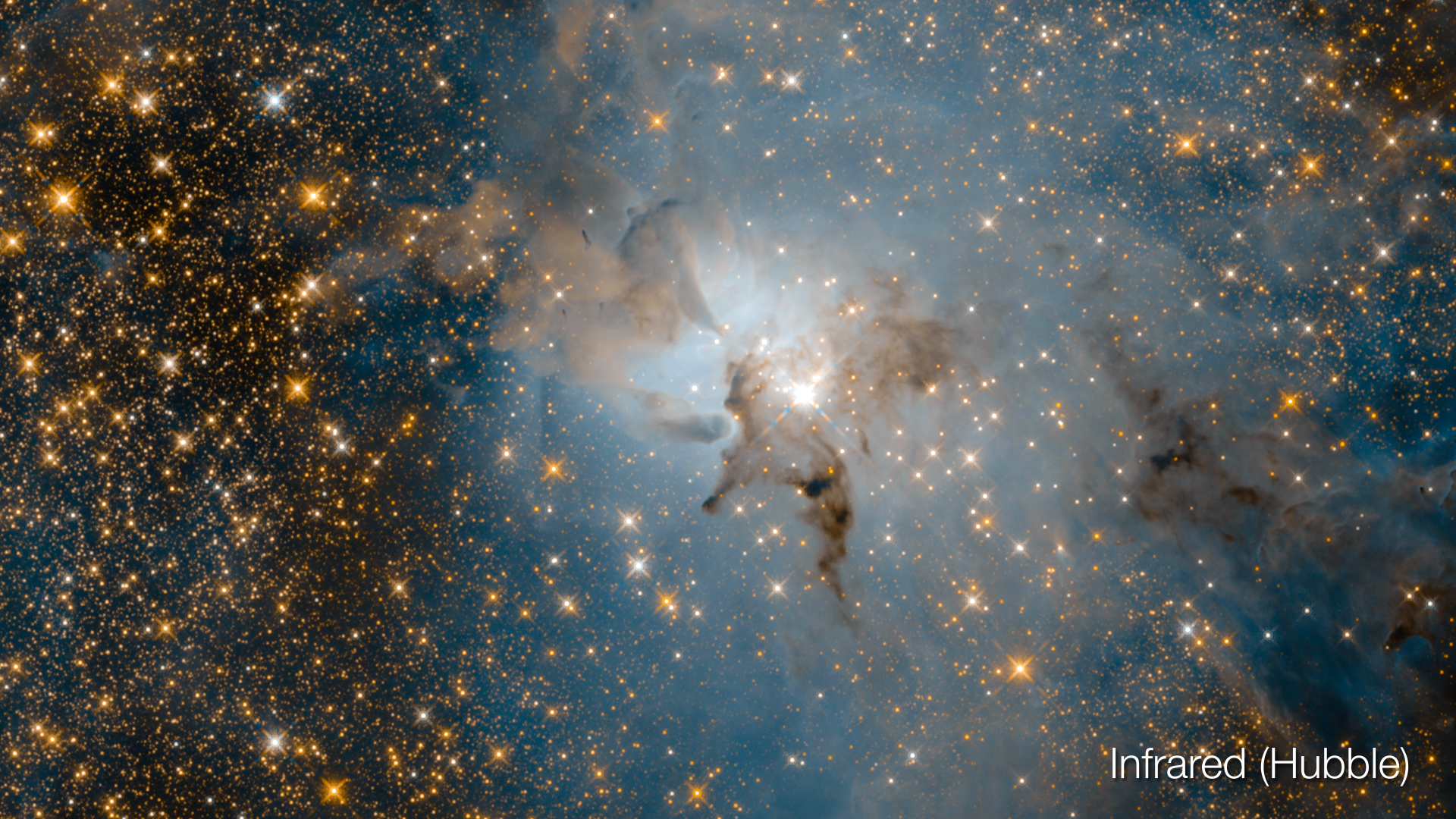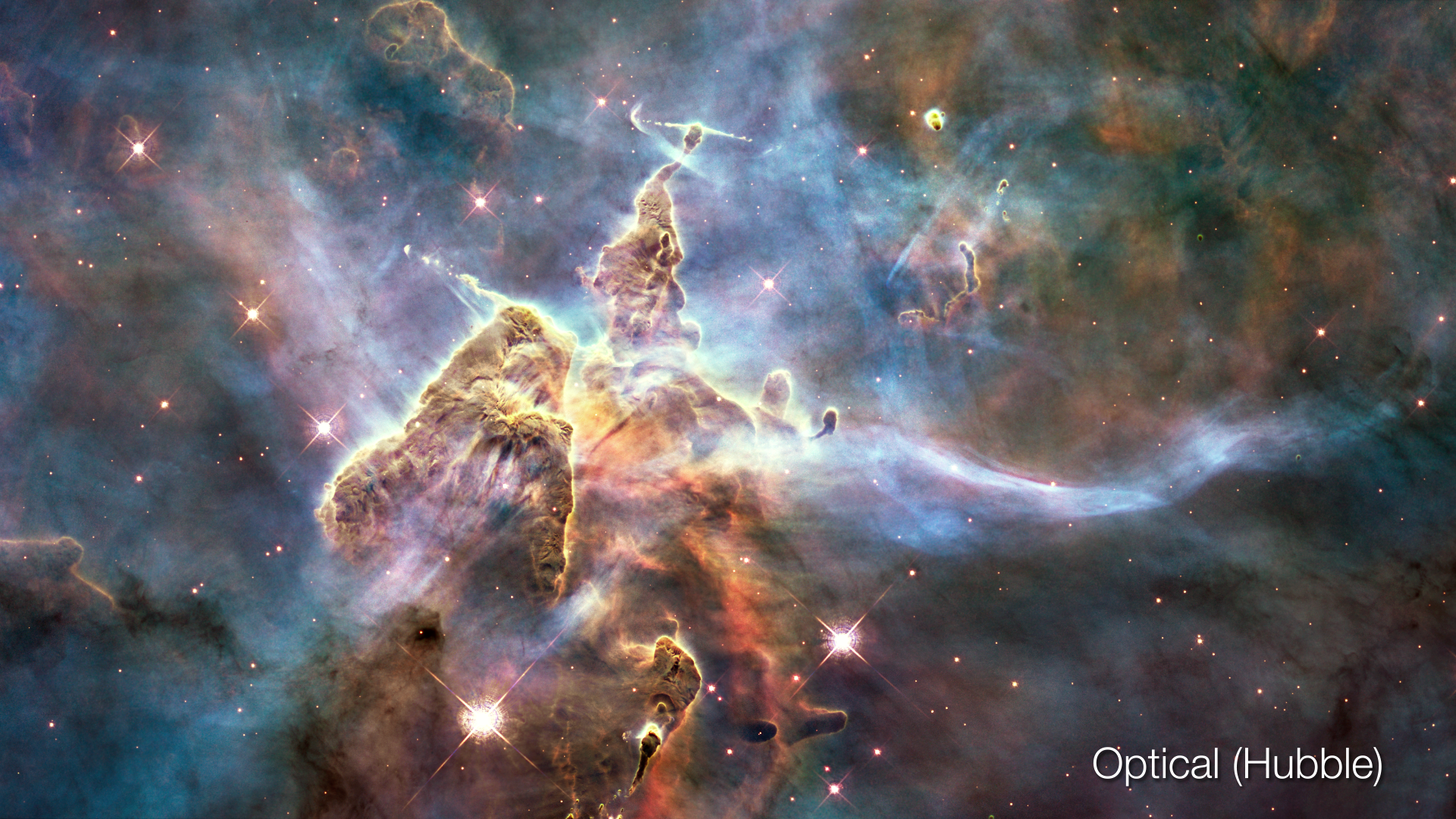Colliding Galaxies (NGC 2207)
This animation shows the interacting galaxy pair NGC 2207, first in optical light, then in infrared, in X-ray, and finally in combination.
NGC 2207 is a pair of colliding spiral galaxies. Their bright central nuclei resemble a striking set of eyes. In visible light (Hubble), trails of stars and gas trace out spiral arms, stretched by the tidal pull between the galaxies. When seen in infrared light (IR; Spitzer), the glow of warm dust appears. This dust is the raw material for the creation of new stars and planets. Complementary to the IR, the X-ray (Chandra) view reveals areas of active star formation and the birth of super star clusters. Though individual stars are too far apart to collide, the materialbetween the stars merges to create high-density pockets of gas. These regions gravitationally collapse to trigger a firestorm of starbirth. The galaxy collision will go on for several millions of years, leaving the galaxies completely altered in terms of their shapes.
This animation is the same as above, played twice as fast.

Visible (Optical), Infrared and X-ray image of the Colliding Galaxy.

Infrared image of the Colliding Galaxy.

Visible (Optical) image of the Colliding Galaxy.

X-ray image of the Colliding Galaxy.
Credits
Please give credit for this item to:
Video: NASA, ESA, and G. Bacon (STScI)
Optical image: NASA, ESA, and The Hubble Heritage Team (STScI)
Infrared image: NASA/JPL-Caltech
X-ray image: NASA/CXC/SAO/S. Mineo et al.
-
Visualizer
- Greg Bacon (STScI)
-
Image processing
- Stefano Mineo (Harvard-Smithsonian Center for Astrophysics)
-
Technical support
- Leann Johnson (Global Science and Technology, Inc.)
Release date
This page was originally published on Monday, April 23, 2018.
This page was last updated on Monday, November 13, 2023 at 12:16 AM EST.
Missions
This visualization is related to the following missions:Datasets used in this visualization
-
[Hubble Space Telescope]
ID: 831 -
[Chandra: Telescope System]
ID: 1002
Note: While we identify the data sets used in these visualizations, we do not store any further details, nor the data sets themselves on our site.


